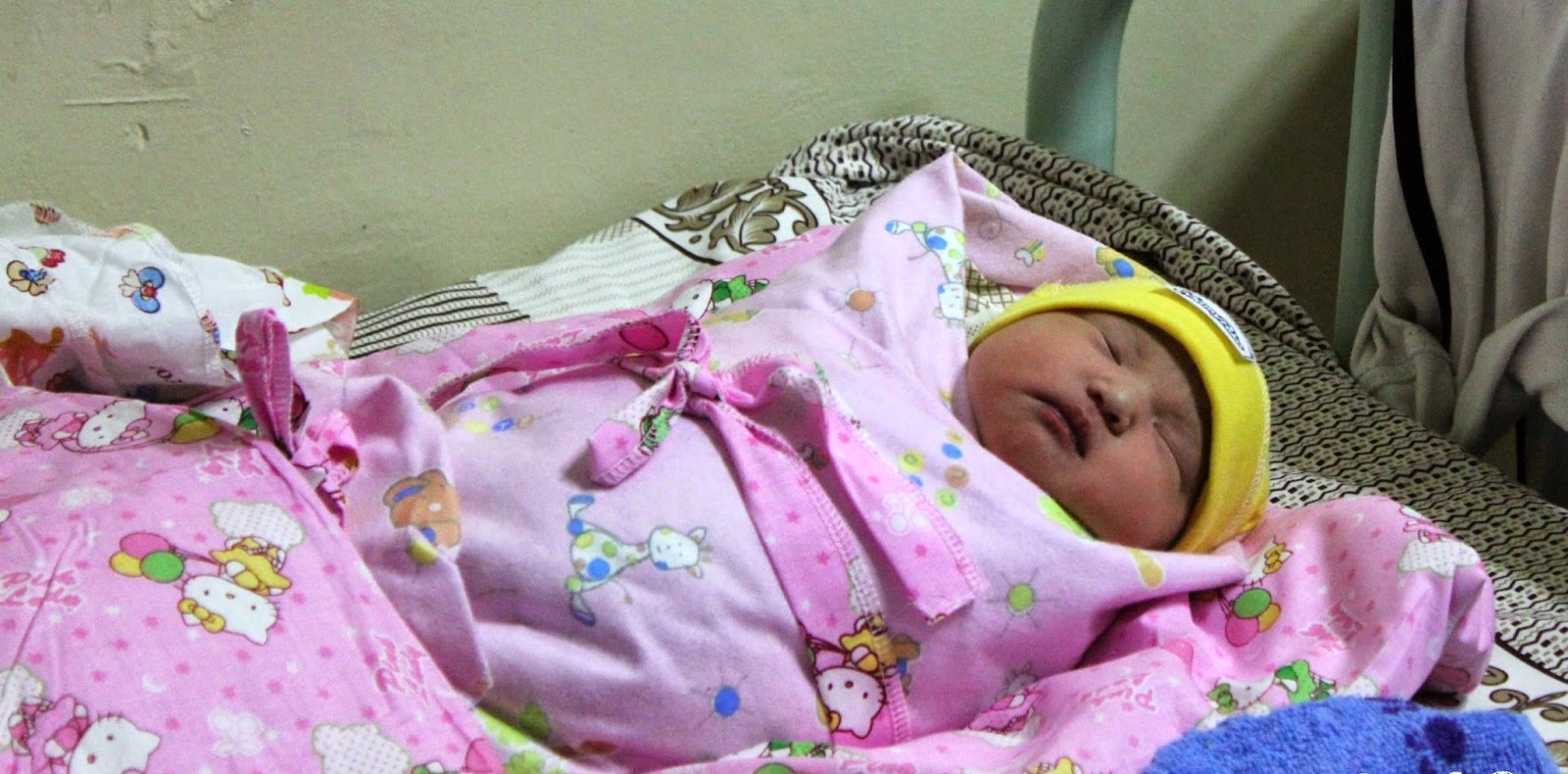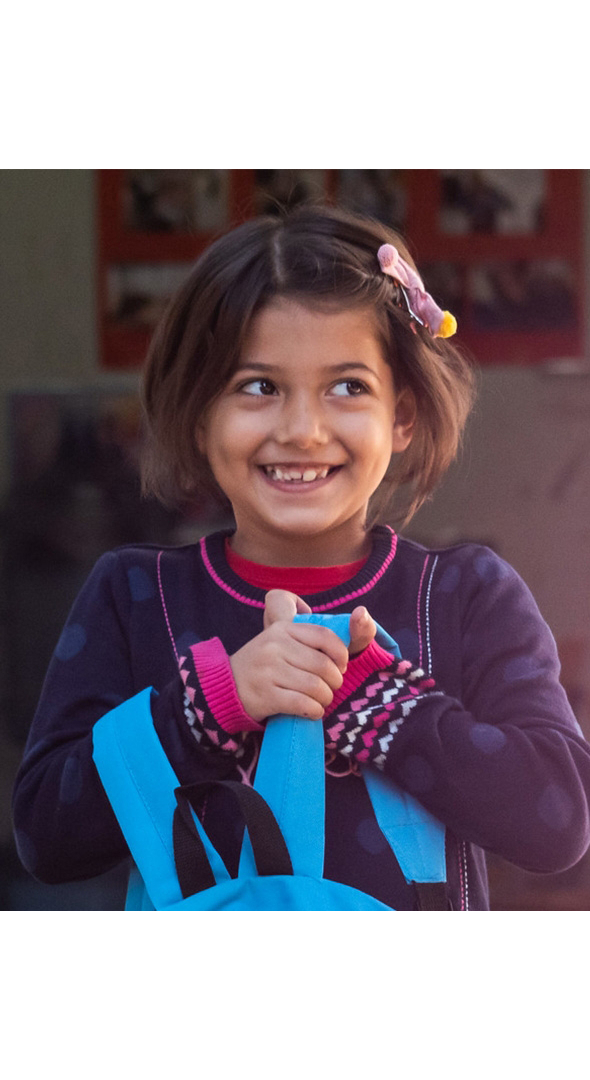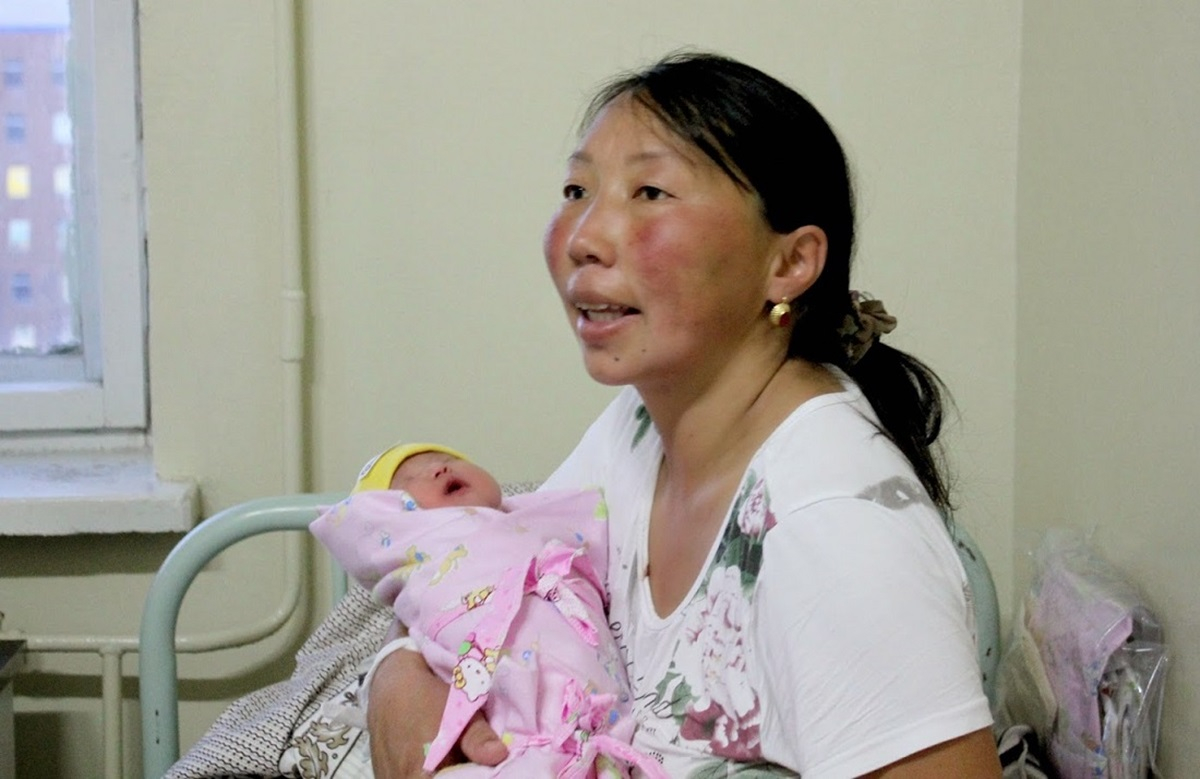Healthy babies, happy mothers
2018-02-23
© UNICEF/2014/Victoria Colamarco
Alimaa with her healthy baby girl.
In a report on newborn mortality, UNICEF says that global deaths of newborn babies remain alarmingly high, particularly among the world’s poorest countries. Babies born in Japan, Iceland and Singapore have the best chance at survival, while newborns in Pakistan, the Central African Republic and Afghanistan face the worst odds.
The average newborn mortality rate in the East Asia and Pacific Region* is 8 per 1,000.
In Mongolia, where the rate is 1 in 103, UNICEF introduced a simple solution to reduce newborn mortality and help save babies lives.

© UNICEF/2014/Victoria Colamarco
Just a few hours old, Alimaa’s fourth child.
A new life is born
Alimaa is leaning over and cooing at her newborn baby daughter. The baby is swaddled and wrapped tightly in a blanket. Alimaa has her hair covered, as is the Mongolian tradition. The bond between them is obvious, as is the love Alimaa has for her new child.
“We wanted her so much and have waited for her so long,” Alimaa says. “She is my last baby, as now I have two girls and two boys”.
Alimaa and family live in Uvurkangai Aimag (Province) 200 kilometres from Mongolia’s capital city, Ulaanbaatar. The family are nomadic herders and live 27 kilometers from the nearest town.
For Alimaa this birth was very different to her previous three experiences. Firstly it was in Ulaanbaatar, but more importantly the hospital where she gave birth was piloting a birthing practice that has now been introduced across the country.
The practice sees babies being placed immediately on their mother’s chest in skin-to-skin contact for the first two hours after birth. This allows the mother and baby to bond, and for the baby to initiate breastfeeding in their own time.
Alimaa said, “When my daughter was delivered, they put her on my chest and I could feel her on my skin,” she says. When they did the skin-to-skin contact I loved it. I was really close to my baby. I could talk to her and really bond with her”.
“When my first babies were born, they took them away without asking. I didn’t know where they were taken or why. I was very worried about them and wanted to see them. I didn’t know if something was wrong with my babies”, she added.
But this time it is different. “I don’t have to worry because she is right here.”
Alimaa believes the practice reduced the stress on her daughter. “She is very calm and not crying. My other children cried all the time. They were not calm and didn’t sleep well. I am worried that she is not normal, because she is so quiet. But she is very alert and active. She eats and sleeps well”.
And it is not just Alimaa’s baby that is very calm and quiet. In Alimaa’s room there are three other mothers, each with their newborn baby. The room is quiet and calm. All the mothers looked relaxed and well rested, even though just hours earlier they had given birth to their babies.
Improving newborn care
Alimaa experienced a birthing practice that was in the four maternity hospitals in Ulaanbaatar, and has now been introduced across the country. The practice focuses on simple steps to improve the survival and health of newborns, including immediate drying of the baby followed by sustained skin-to-skin contact, delayed cord clamping and early initiation of exclusive breastfeeding.
UNICEF Health Specialist Dr Surenchimeg Vanchinkhuu says, “We have introduced high impact, lifesaving interventions in delivery rooms that will improve child survival during this very vulnerable stage of their life. The practice, was developed based on evidence, incorporates simple procedures that will significantly improve a child’s chance of survival past the first 28 days of life”.
For Alimaa, she isn’t worried, “I wouldn’t want to change this experience, with the skin-to-skin contact for anything,” she says. “Every mother should have the opportunity to experience this”.










